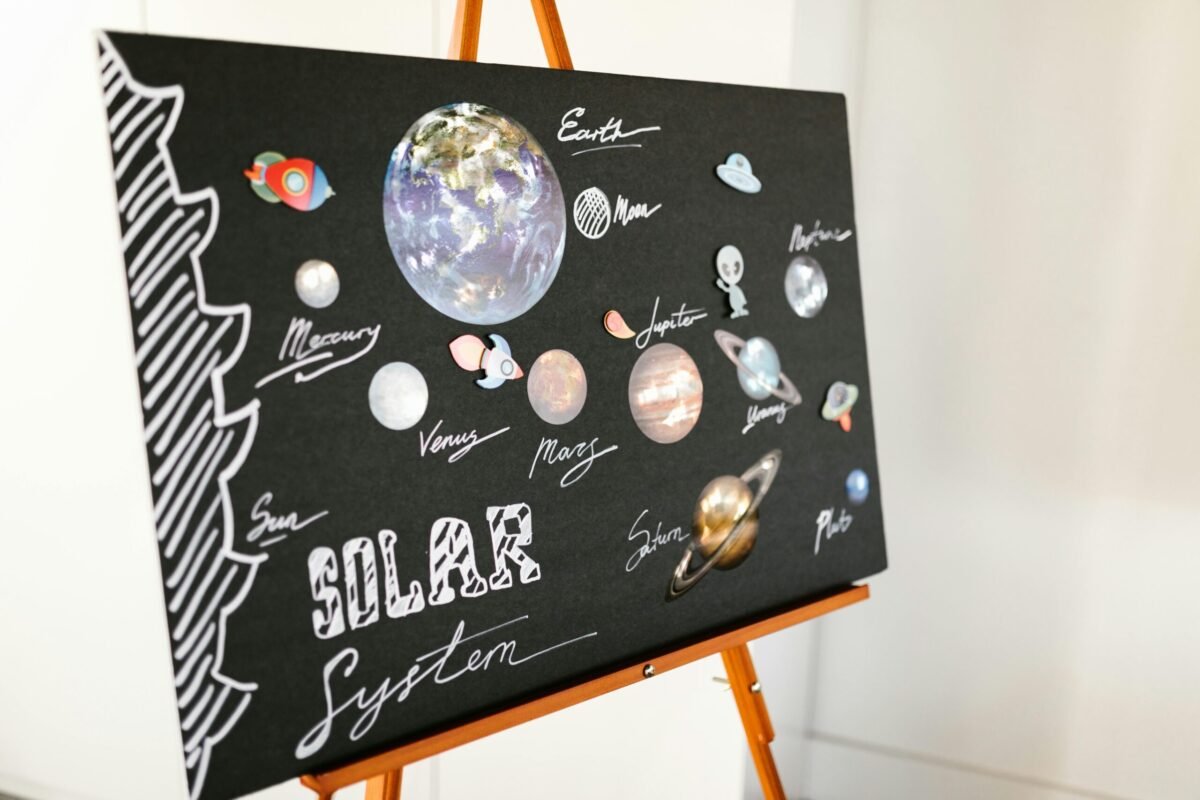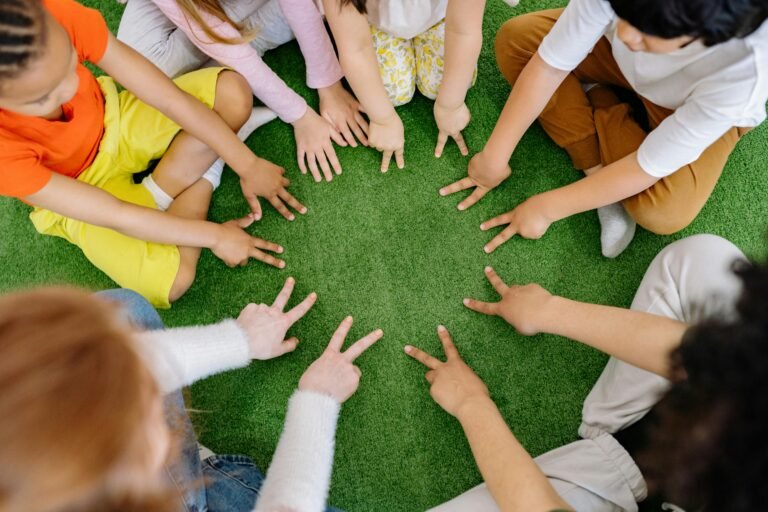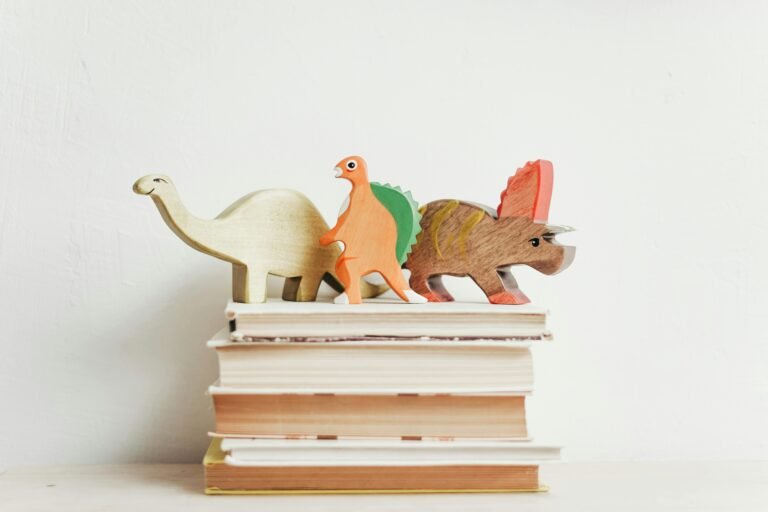When you teach about the planets and the solar system, you’re not just naming celestial bodies, you’re helping students imagine a world beyond their own. Picture books and illustrations are some of the best ways to introduce astronomy concepts in ways that are engaging, concrete, and emotionally meaningful.
This list of top websites supports educators in combining science, literacy, and curiosity in the classroom. From virtual space explorations to book lists and standards-aligned lesson plans, these sites will help you reach for the stars (literally).
Each entry includes:
- ✅ Why it’s worth knowing
- ✅ What it’s best for
- ✅ A teaching tip or bonus feature to check out
List of Websites for Teaching Elementary School Students About Planets and the Solar System
Because science learning is stronger when it’s told like a story.
1. NASA Space Place
Why it’s worth knowing:
NASA’s kid-focused site is a goldmine of articles, animations, videos, and activities about space science—written clearly for elementary learners.
Best for:
Answering those big “why” and “how” questions kids have about the planets, stars, and beyond.
Notes:
Use their “Explore” feature to find content that complements books like There’s No Place Like Space or The Darkest Dark.
2. Reading Rockets – Space & Astronomy Booklists
Why it’s worth knowing:
This curated list includes fiction and nonfiction books for a range of elementary ages, with themes like planetary science, moon missions, and astronauts.
Best for:
Finding read-alouds that support NGSS-aligned topics and spark classroom conversations.
Notes:
Pair books from this list with Reading Rockets’ author interviews or literacy-building activities.
3. NASA’s Solar System Exploration – Education Resources
Why it’s worth knowing:
This educator portal connects you to downloadable activities, videos, and fact sheets about each planet, NASA missions, and solar system science.
Best for:
Upper elementary and middle school classrooms ready to explore beyond the basics.
Notes:
Let students “adopt a planet” using NASA’s planet fact pages to create planet brochures or digital posters after reading space-themed books.
4. Peep and the Big Wide World – Space Activities
Why it’s worth knowing:
This PBS Kids resource uses animated storytelling and hands-on activities to introduce basic space concepts to young learners.
Best for:
Preschool and early elementary classrooms exploring light, day/night, and space through playful learning.
Notes:
Pair with books like Papa, Please Get the Moon for Me or Kitten’s First Full Moon for SEL + science combos.
5. The Children’s Book Review – Space & Planets Booklists
Why it’s worth knowing:
Updated frequently, this site curates rich, diverse booklists about space, astronauts, and the solar system, often featuring new and own-voice authors.
Best for:
Building a space-themed classroom library or choosing independent reading options by interest level.
Notes:
Use the list to offer “book flights” where students choose between fiction and nonfiction texts on similar planetary topics.
6. Mystery Science – Space Lessons
Why it’s worth knowing:
Mystery Science makes inquiry-based science accessible with short videos, guided investigations, and materials lists. Their space lessons are especially kid-friendly and high-impact.
Best for:
Hands-on science that pairs well with stories like Mousetronaut or Pluto’s Secret.
Notes:
Use their mini-lessons as a science warm-up before diving into a related storybook.
7. Story Time from Space
Why it’s worth knowing:
Actual astronauts read children’s books from the International Space Station—yes, really! The videos are both magical and educational.
Best for:
Motivating reluctant readers or celebrating a space-themed unit with an unforgettable storytime.
Notes:
Follow up with student questions for a class “Ask an Astronaut” discussion or writing prompt.
8. National Geographic Kids – Planets and Space
Why it’s worth knowing:
This vibrant site features fun facts, short articles, interactive quizzes, and video content about all things space.
Best for:
Supplementing lessons or projects tied to picture books with accurate, high-interest nonfiction.
Notes:
Challenge students to create a “Planet Fact Rap” after reading a space-themed book and exploring this site.
9. Scholastic Learn at Home – Space Learning Sets
Why it’s worth knowing:
This archive of at-home learning resources includes leveled reading passages, vocabulary builders, and hands-on science activities—all ready to print or assign digitally.
Best for:
Cross-curricular lesson planning that supports both ELA and science.
Notes:
Create a “space week” reading rotation with Scholastic passages + picture books + journaling.
10. ESA Kids – European Space Agency Education Portal
Why it’s worth knowing:
ESA Kids is the European Space Agency’s vibrant, multilingual site designed specifically for young learners. It includes space facts, games, animations, and activity ideas, often with a more global perspective on space exploration than U.S.-based resources.
Best for:
Diverse classrooms or international comparisons of space missions and discoveries.
Notes:
Use ESA’s “Space Facts” section to inspire compare-and-contrast activities alongside books like The Darkest Dark, especially when talking about international space efforts.
Book Pairing Ideas for Your Science Solar System Units
Here are some highly engaging picture books to pair with your space lessons:
The Darkest Dark by Chris Hadfield
A dreamy autobiography from astronaut Chris Hadfield about conquering fear of the dark and dreaming big.
Best for: Grades K–3 | SEL + Inspiration
Mousetronaut by Mark Kelly
An adorable story written by astronaut Mark Kelly about a mouse that helps on a space mission—based on a true NASA experiment.
Best for: Grades K–2 | Problem Solving + Teamwork
There’s No Place Like Space! by Tish Rabe
A Dr. Seuss-style introduction to the planets, stars, and galaxies. Rhyming and fun while reinforcing content vocabulary.
Best for: Grades K–2 | Early Planetary Knowledge
Pluto’s Secret: An Icy World’s Tale of Discovery by Margaret A. Weitekamp
This book cleverly explains Pluto’s reclassification while introducing astronomy and the scientific method.
Best for: Grades 3–5 | Science Reasoning + Nonfiction Narrative
If You Decide to Go to the Moon by Faith McNulty
A lyrical, poetic guide to space travel that also touches on Earth appreciation.
Best for: Grades 2–5 | Imaginative Writing + Science Integration
In Closing
Blending picture books with science instruction lets students explore both the facts of the universe and their feelings about it. These resources make it easier to engage multiple learning styles, meet standards, and keep curiosity front and center.
Whether you’re launching a unit on the planets, planning a literacy-rich space week, or just looking for something new to excite your students, these sites and stories can take your classroom out of this world.
Are you looking for more classroom-ready ideas like this one? Head back to our main resource hub to keep exploring resources for teachers.









